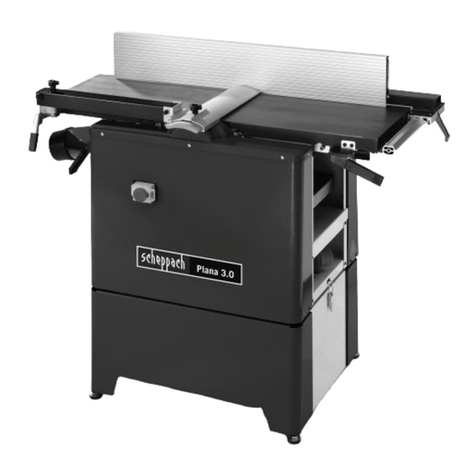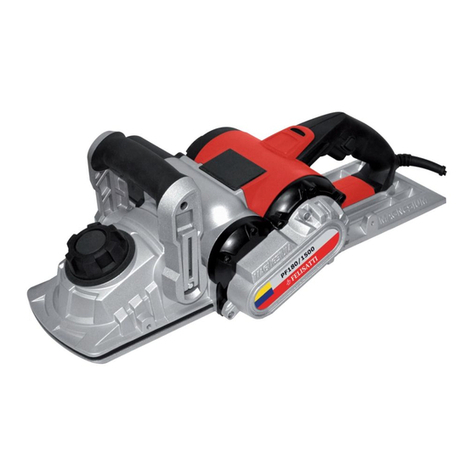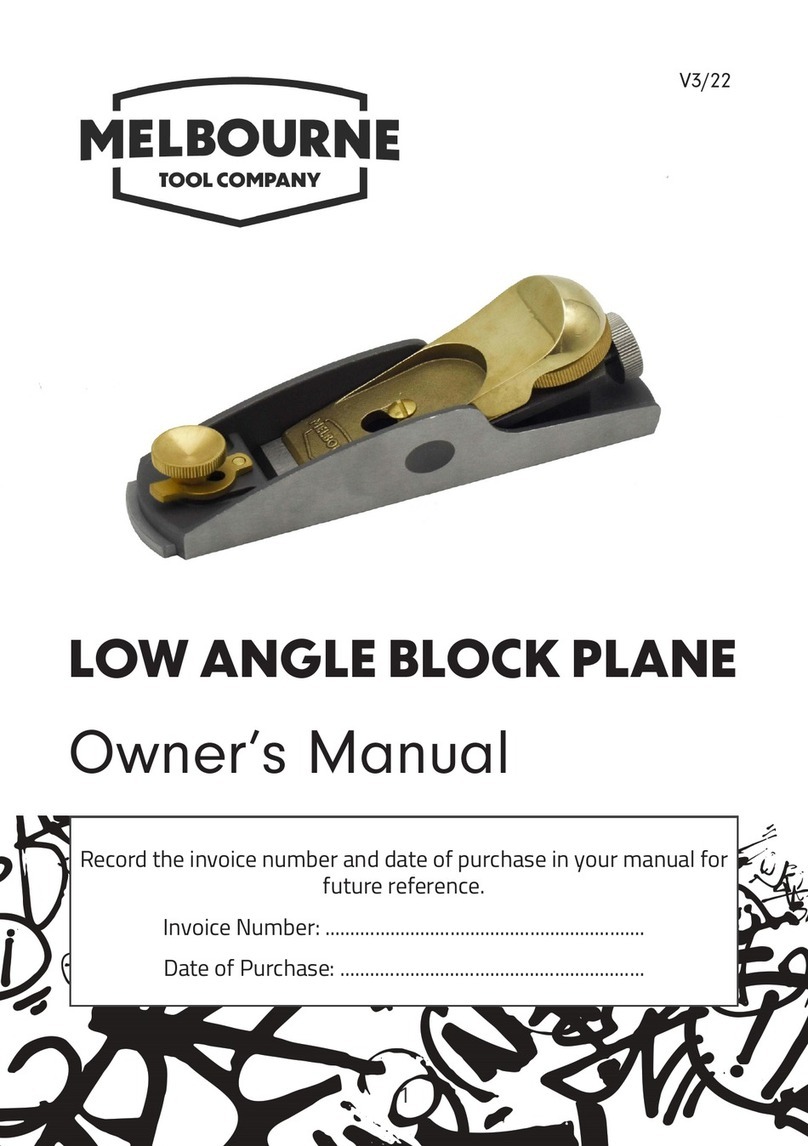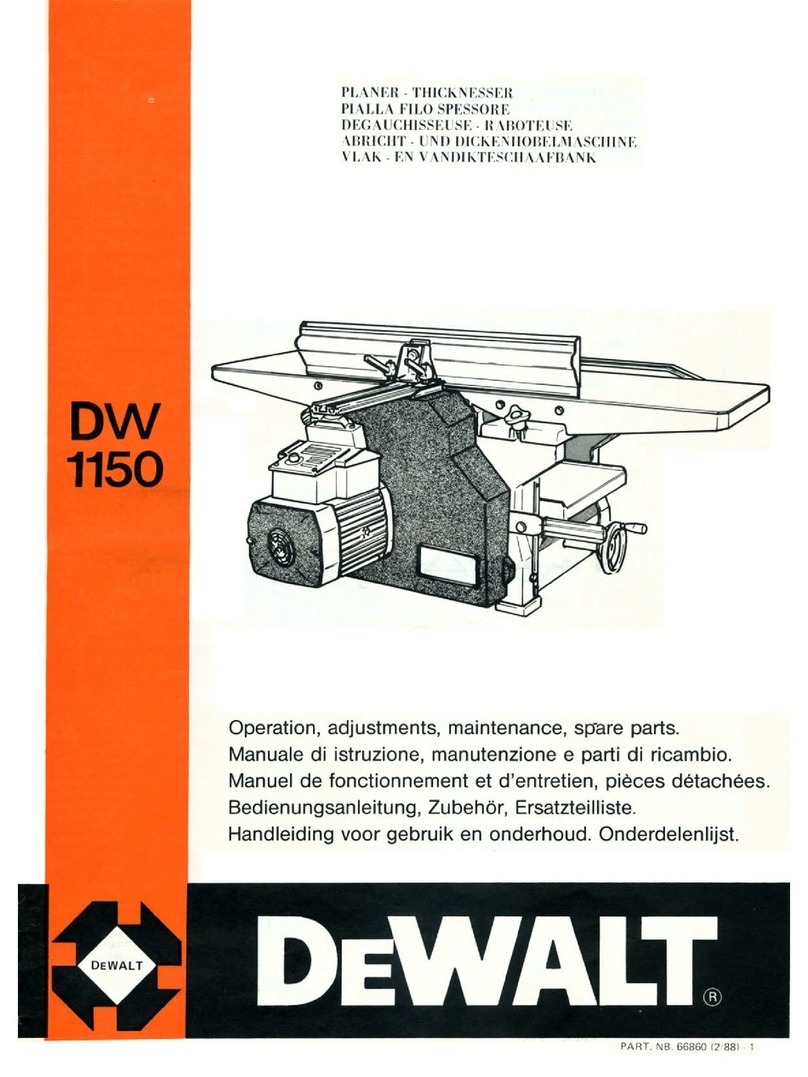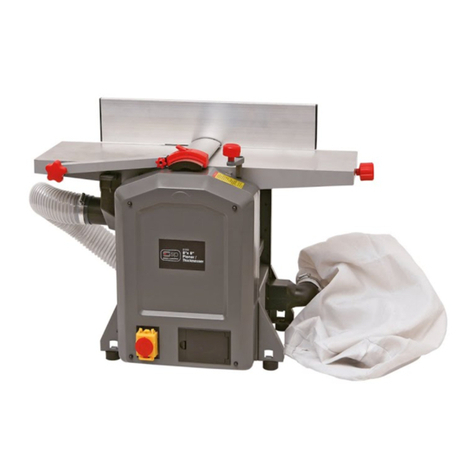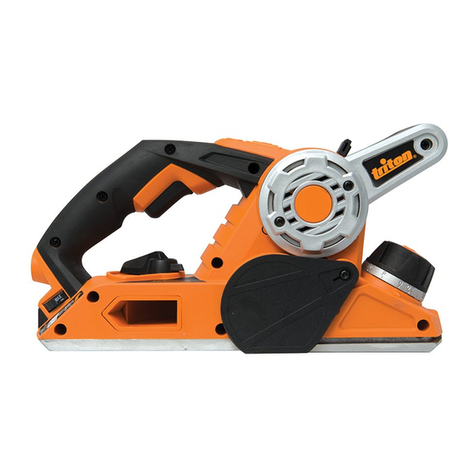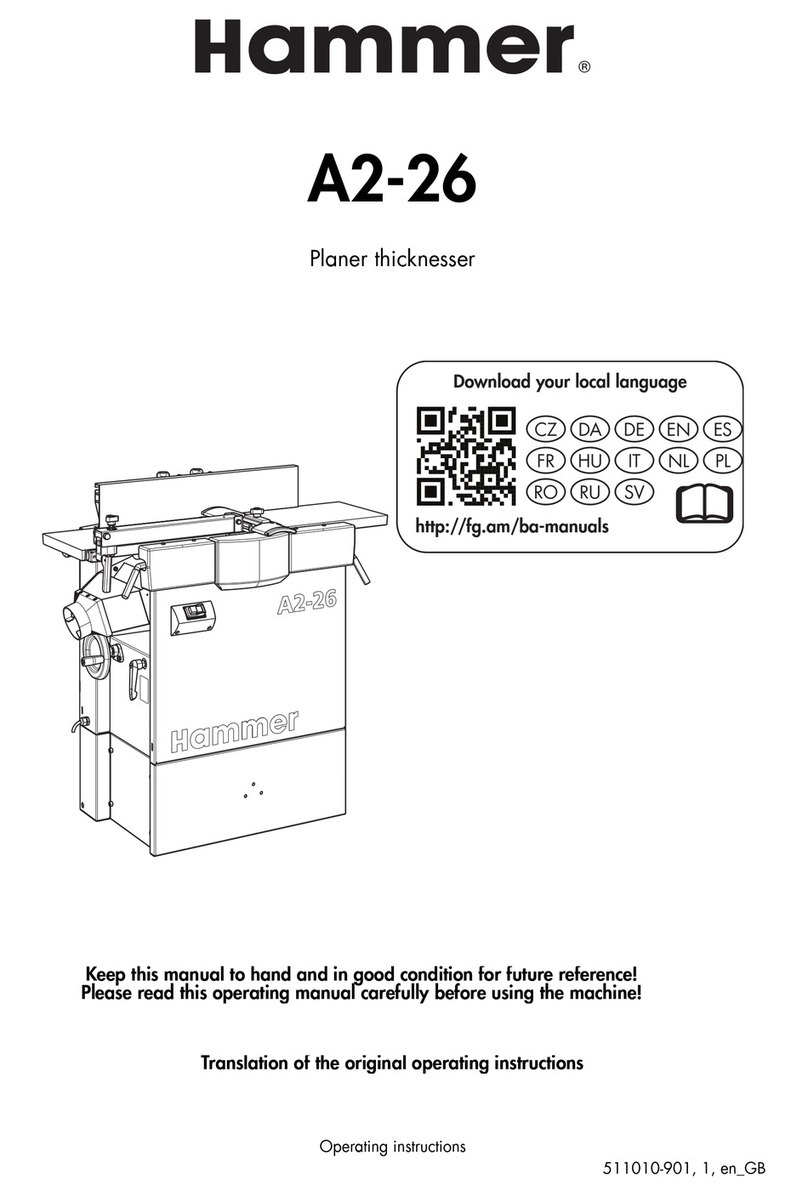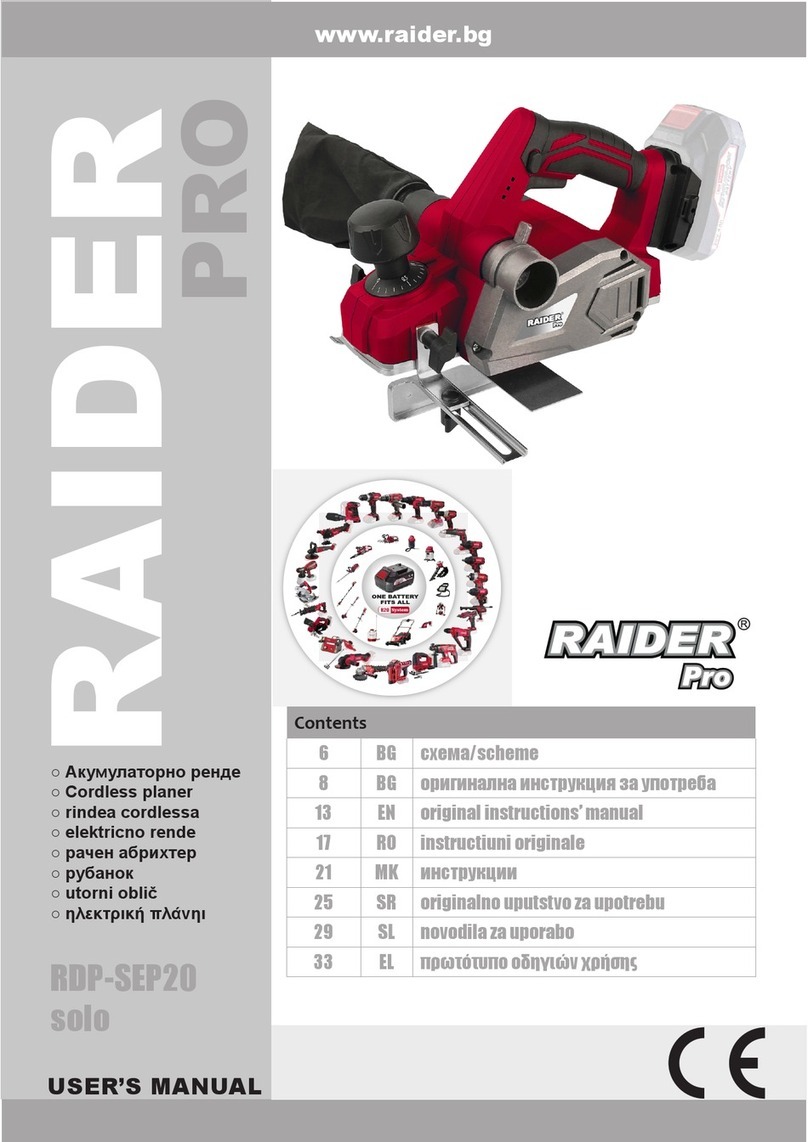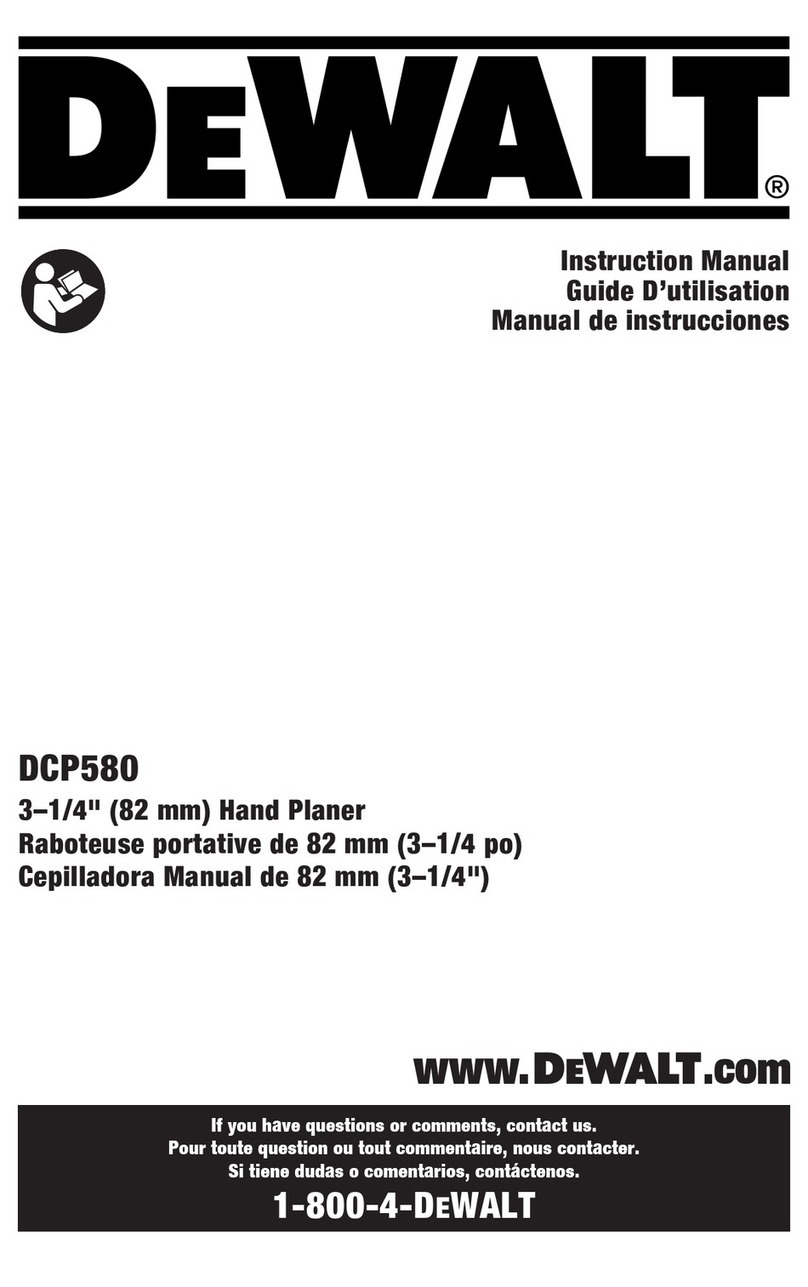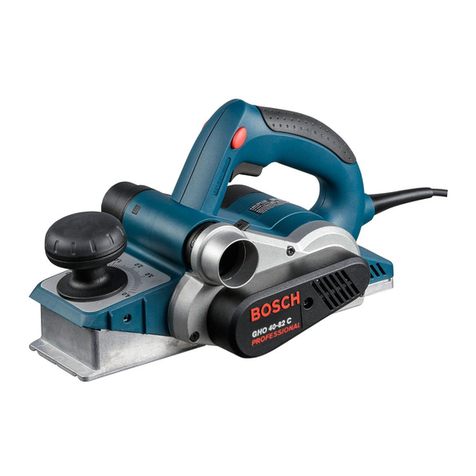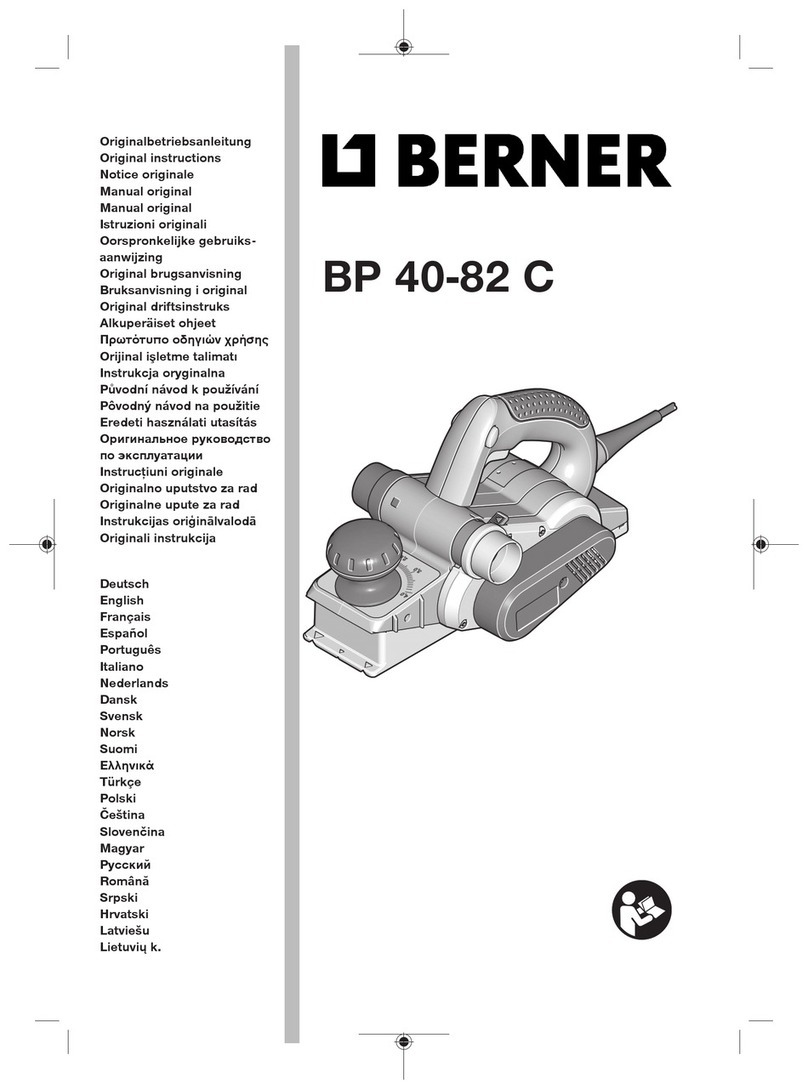
5
SAFETY INSTRUCTIONS Cont.
(10) Don't abuse cables
-Never carry a tool by its cable , or "yank" the cable to disconnect from a socket.
-Keep cable away from heat, oil and sharp edges.
-Do not abuse the lead.
(11) Don't overreach
(12) Keep proper footing and balance at all times.
(13) Maintain tools with care.
(14) Keep cutting tools sharp and clean for better and safer performance.
(15) When not in use, before servicing and when changing accessories such as blades, bits, cutters,
disconnect tools from the power supply.
(16) Remove adjusting wrenches
- Get into the habit of removing wrenches, spanners etc from the planer / thicknesser before switching it
on.
(17) Avoid unintentional starting
(18) Ensure switch is in “off” position when plugging in.
(19) Use outdoor extension leads
(20) When the tool is used outdoors, use only extension cords intended for outdoor use and so marked.
(21) Stay alert
(22) Watch what you are doing, use common sense and do not operate the tool when you are tired.
(23) Check damaged parts
(24) Before further use of tool, it should be carefully checked to determine that it will operate properly and
perform it’s intended function.
(25) Check for alignment of moving parts, binding of moving parts, mounting and any other conditions that
may affect it’s operation.
(26) A guard or other part that is damaged should be properly repaired or replaced by an authorized
service centre unless otherwise indicated in this instruction manual.
(27) Have defective switches replaced by an authorized service centre.
(28) Do not use the tool if the switch does not turn it on and off.
(29) Warning
(30) The use of any accessory or attachment other than one recommended in this instruction manual may
present a risk of personal injury.
(31) Have your tool repaired by a qualified person
(32) This electric tool complies with the relevant safety rules. Qualified persons using original spare parts
should only carry out repairs. Otherwise this may result in considerable danger to the user.
(33) Never use the machine without the appropriate guard in place and correctly adjusted.
(34) Do not use knives, which are blunt as this increases the danger of kickback.
(35) Any portion of the cutter block not being used for planning shall be guarded.
(36) When planning short workpieces, a push-stick should be used.
(37) When planning narrow workpieces additional measures. Such as of horizontal pressure devices and
spring-loaded guards, may be necessary to ensure safe working.
(38) Do not use the tool cut rebate.
(39) The effectiveness of the device for the prevention of kickback and the feed spindle should be
regularly inspected to ensure safe operation.
